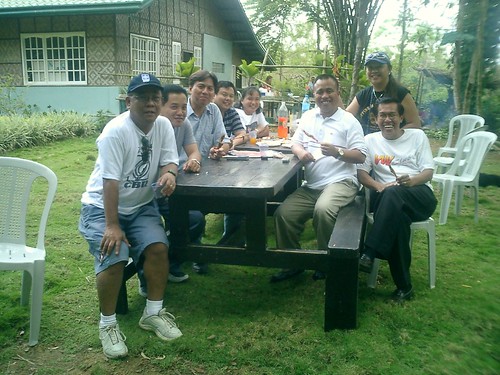He Said, She Said
At the center of Philippine President Gloria Macapagal Arroyo's woes is a widely circulated tape of purported telephone conversations between a woman and an election officer identified by ex-colleagues as Virgilio Garcillano. Here's why the recording is proving so troublesome for Arroyo:
What does the tape say?
It contains more than a dozen conversations between a man referred to as "Garci" and several callers, including a voice that sounds like Arroyo's. The most damaging excerpt is this:
Female voice: "So will I still lead by 1M [sic]?"
Garci: "More or less it's that advantage, ma'am."
Female voice: "It cannot be less than 1M?"
Garci: "I will force it."
What is the implication?
The "1M" may refer to 1 million votes—which is about the margin by which Arroyo won the May 2004 presidential election. In her apology to the nation last week, she admitted to a "lapse in judgment" for phoning an official of the Commission on Elections. She said she did so to ensure her lead would not be eroded by her opponents cheating. Arroyo's critics say that by contacting an election official during the counting, she abused her power. Arroyo neither mentioned the tape nor said the female voice was hers, and did not name the election official she talked to.
Why not?
That might have hoisted Arroyo on her own petard. On June 6, the presidential palace released two tapes: the Garci tape that is circulating, and another tape recording of the President speaking to someone called Gary, with similar dialogue. The palace said the Garci tape was doctored to make Arroyo look bad, and that the Gary tape is the genuine recording. A few days later, an Arroyo loyalist in the central Philippines, Edgar Ruado, chief of staff of Mrs. Arroyo's Congressman brother-in-law Ignacio Arroyo, came forward to say he was Gary. If Arroyo's voice was indeed the one on the Garci tape, and she had acknowledged so, she would have tacitly admitted that the Gary tape was a lie—implying a presidential palace cover-up.
How did the Garci tape become public?
Francisco Tatad, a former Senator in the opposition camp, says he received two audiotapes from an anonymous source in the mail in May. He gave them to a lawyer, Alan Paguia, asking for legal advice on the conversations. Paguia, who worked in 2003 as an attorney for Arroyo's predecessor Joseph Estrada, made a 32-minute condensed version. When the palace released its copy of the conversations (the Gary tape), Paguia started distributing the other version on CD. The lawyer says he wasn't working on behalf of Estrada, but had his own reasons for spreading the CDs: in November 2003 the Supreme Court had suspended Paguia's right to practice law for his repeated criticism of its approval of Arroyo's taking over the presidency from Estrada.
Who recorded the phone conversations in the first place?
Technical Sergeant Vidal Doble has admitted to taping the phone calls as part of his duties at the Intelligence Services of the Armed Forces of the Philippines. Doble says he gave the original tapes to the driver and bodyguard of Samuel Ong, a former deputy chief of the National Bureau of Investigation. Why he did so—whether he was paid by the opposition, as has been alleged by Arroyo's aides—is unclear. Ong is in hiding; the original tapes, according to his attorney, are with a trusted friend. Election officer Garcillano has also disappeared and is rumored to have left the country.







1 comment:
Very good article. I am going through many of these issues as well.
.
Look into my site natural cellulite treatment
Post a Comment